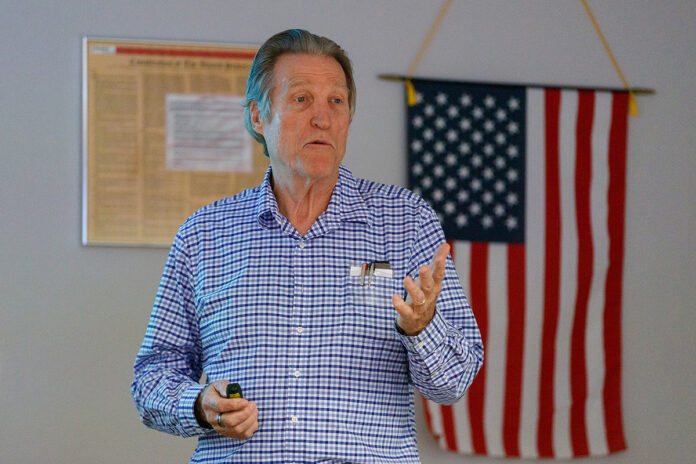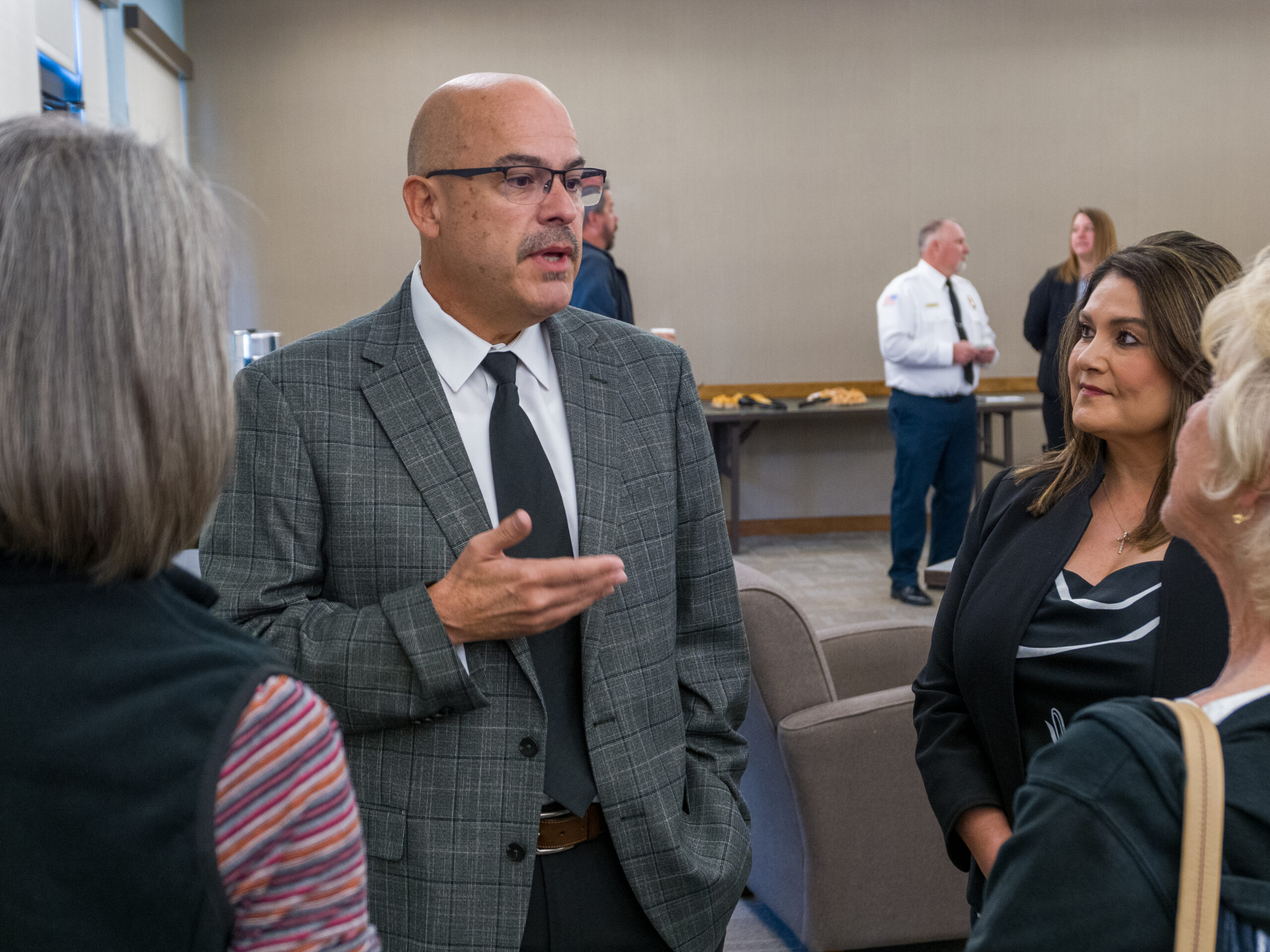John Black presented a lecture titled “Artificial Intelligence: Power and Perils” at Yavapai College as part of the Osher Lifelong Learning Institute’s Brown Bag series on Tuesday, Sept. 12.
Black opened by discussing the history of attempts to define and create artificial intelligence, beginning with Alan Turing, a British mathematician and World War II codebreaker who is considered the father of theoretical computer science. After the war, he focused his research on artificial intelligence, asking if computers could think.
To define thinking, Turing proposed what came to be called the Turing test in 1950, which involved an interrogator asking questions of both a human and a computer and deciding which was which. If the interrogator guessed incorrectly which answer came from the human and which came from the computer 50% of the time, then Turing suggested that the computer could be considered to be thinking at a level equivalent to that of the human. Even if the computer passed the test, however, that would not resolve the question of whether or not such reactions were intelligence.
According to Black’s timeline, AI research became more formalized around 1955. In the 1980s, research focused on creating software that could pursue a rational goal, such as winning a game of chess. Research funds dried up in 1988 and something that Black called an “AI winter” occurred until the 2000s.
Black then addressed ChatGPT, which is a chat interface wrapped around a generative pre-trained transformer, and is often called an example of artificial intelligence. He distinguished between a GPT as a form of software and ChatGPT, which combines the transformer with a chatbot. The program attempts to produce a reasonable continuation of text provided to it, while trying to sound as similar to human writing as possible.
The GPT algorithm is a brute-force method that produces results based on probability by consulting a list of ranked words likely to be found at the end of the queried string of words within its training set, which consists of billions of pages of text. The program generates text by continually asking what word comes next, adding the next-most probable word one at a time.
There are about 40,000 commonly-used words in the English language, which creates a high number of probabilities and word sequencing possibilities.
The chatbot can also pick lower-ranked words to produce different results each time and a more varied text output.
Black claimed that this technology was modeled after a human brain by creating an imitation neural network. These artificial neural networks were invented in the 1940s and contained mathematical models of neurons like those in the human brain. Neurons are arranged in layers, with output from each layer feeding input into the next layer. Each connection between these neurons is adjustable. This technology can build and train a machine to act like a human brain. However, the use of brute-force methods by ChatGPT and similar software is a separate approach to computing.
Black added that while the software can create text, it does not understand the meaning of the words it is generating.
Attendees discussed some of the topics that have arisen with the increasing accessibility of this technology. Plagiarism was one such issue. Ethics was another, as users can choose what information and text to use to train a GPT chatbot, potentially creating biases or misinformation.



